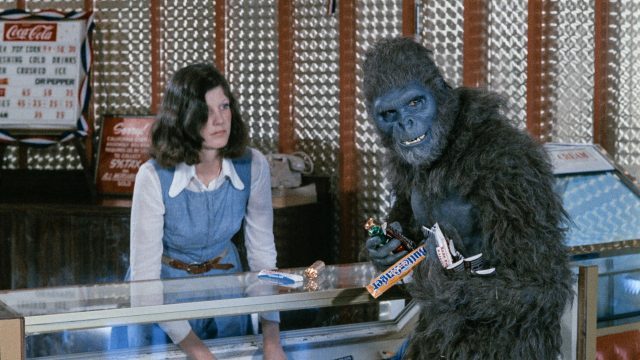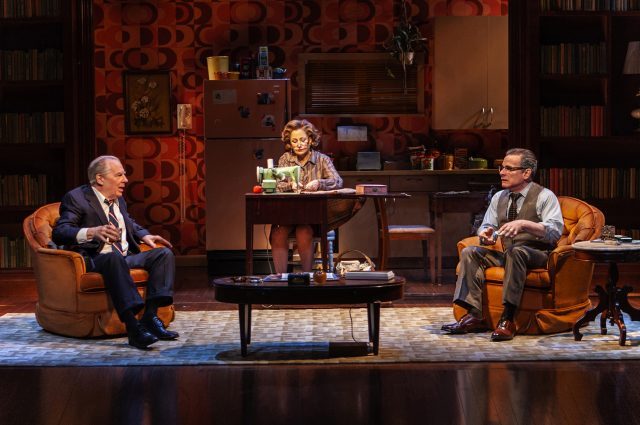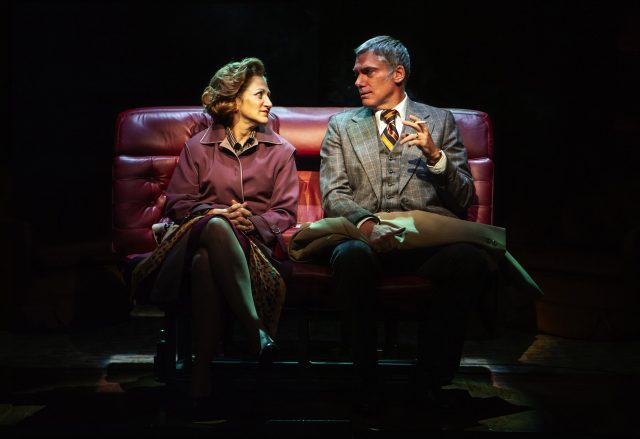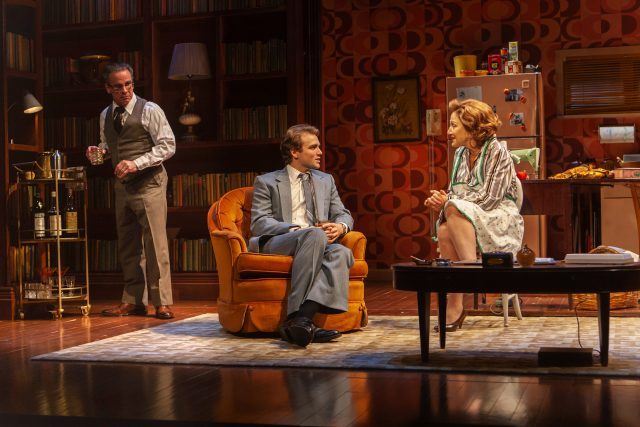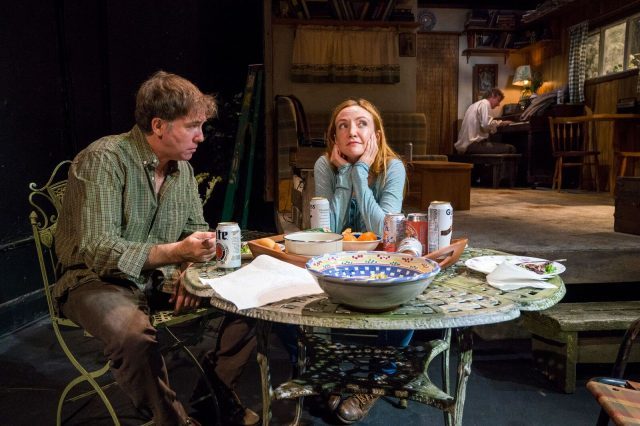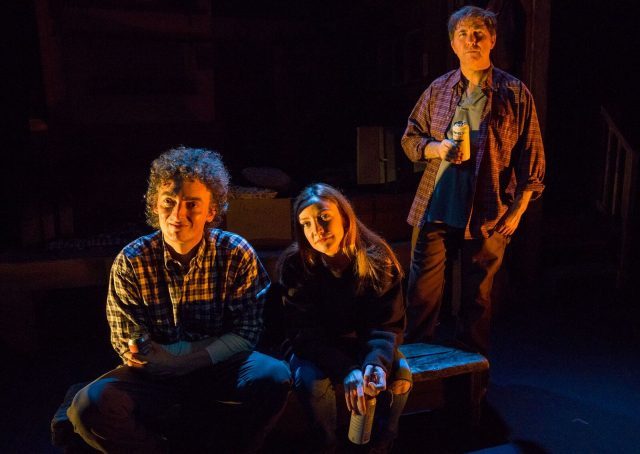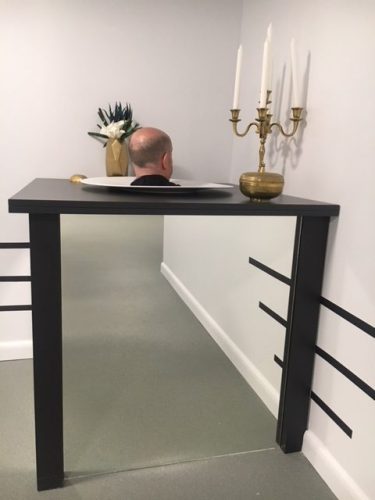
Head on the Platter creates a unique effect at Museum of Illusions (photo by Sam Prete)
77 Eighth Ave. at Fourteenth St.
Open daily 9:00 am – 10:00 pm, adults $19, children six to thirteen $15
212-645-3230
newyork.museumofillusions.us
www.instagram.com/moi_newyork
The Museum of Illusions, which opened last week in the old 1907 New York County National Bank building on the corner of Eighth Ave. and Fourteenth St., is heavily branding itself as an “Instagram-friendly” institution, so much so that there are stickers on the floor to indicate where visitors can ostensibly take the best photographs. Unlike other pop-up exhibitions — Candytopia, the Museum of Pizza, the Color Factory — the Museum of Illusions is planning on staying around, becoming a longtime part of the cultural life of the city, appealing to tourists, locals, and school groups. The museum is the first branch in the United States; they also can be found in Vienna, Kuala Lumpur, Muscat, Zagreb, Zadar, and Ljubljana, with Kansas City next. The museum features more than forty interactive installations that play with visitors’ perception, tricking the brain and the body; while some are familiar optical illusions, others are new. There are holographic portraits that appear to follow you, Magic Eye–like pictures that slowly unfold, a zoetrope sculpture that looks like a moving blue brain, spinning turntables that seem to emerge from the wall, and a true mirror that reverses what you’re used to seeing in your reflection. (It’s particularly disconcerting for people with more asymmetrical faces.)

Kaleidoscope installation at Museum of Illusions is dazzling (photo by twi-ny/mdr)
The Shepard’s Box and Jastrow, Ponzo, Fraser Spiral, and Müller-Lyer illusions defy logical geometrics of shape and size. In the Ames Room, you go from being very small in one corner to giant in another; the Tilted Room affects your equilibrium so you’ll feel off balance and unsure of your footing; the Rotated Room, flipped at a ninety-degree angle, helps explain how Fred Astaire danced on the walls and ceiling in Royal Wedding; and at the Clone Table you can sit down with five images of yourself. The coup de grâce is Head on the Platter, in which it appears that a head has lost its body. Most of the displays are lightly labeled (and hard to read) and describe how the illusion works; it’s best if you try to figure out how the illusion works before reading about it. Several of the installations resemble or share names with pieces by such international artists as Olafur Eliasson and Yayoi Kusama (although the Infinity Room contains multiple mirrors, it is not one of Kusama’s awe-inspiring installations), but no one is given credit for any of the individual illusions and puzzles on display.
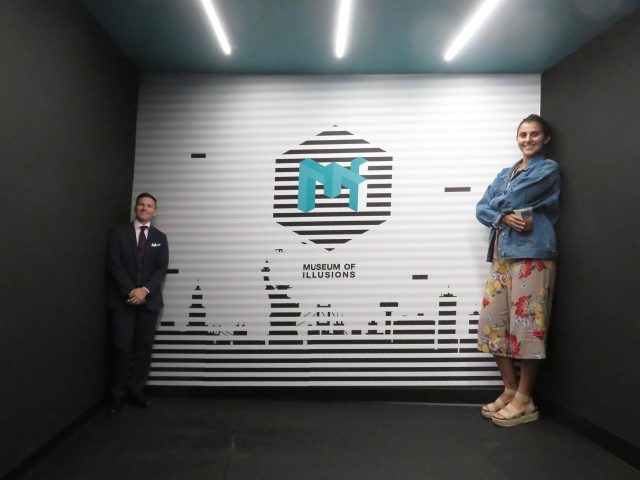
The Ames Room challenges viewers’ perspective when it comes to size and distance (photo by twi-ny/mdr)
Although strolling through most museums is something that can be enjoyed solo, you’re going to want to go to the Museum of Illusions with either friends or family, not just so they can take pictures of you, but so you can get the most out of exhibits that require at least two people to work. For example, a large kaleidoscope only dazzles if there are people on both sides, and someone has to be sitting in the Beuchet Chair in order for the viewer to get its full effect. Also, be sure to occasionally put the camera away and let yourself be absorbed by the illusions, not worrying about how photos of it will look on social media. “It’s a place where you can pause reality,” actor and CEO Renne Gjoni told me during an exclusive private tour a few days before the opening. Actually, it provides a fun, skewed view of reality, for narcissists and non-narcissists alike.
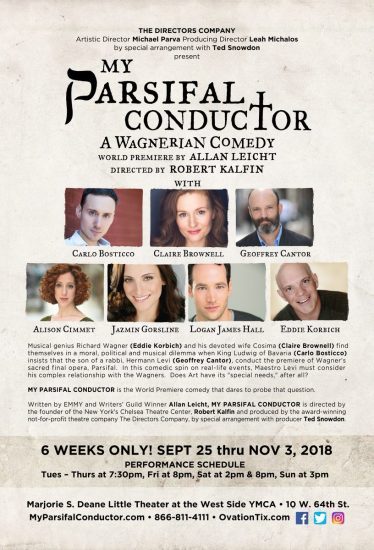
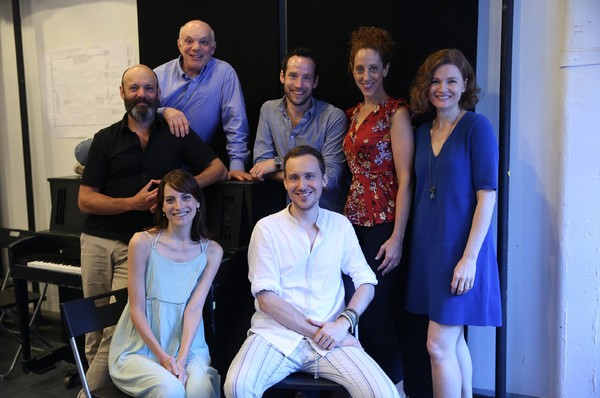

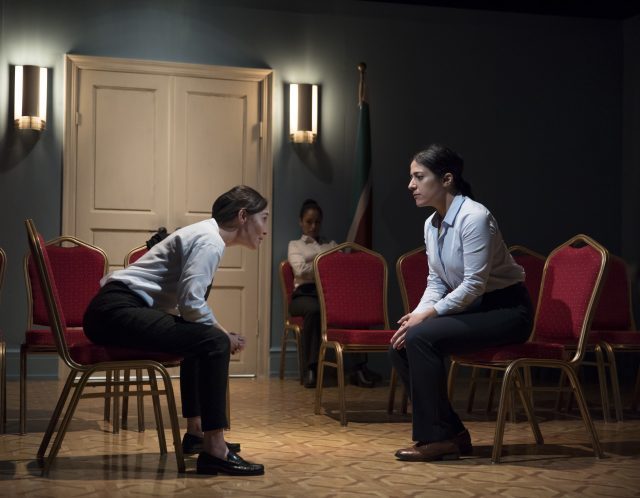
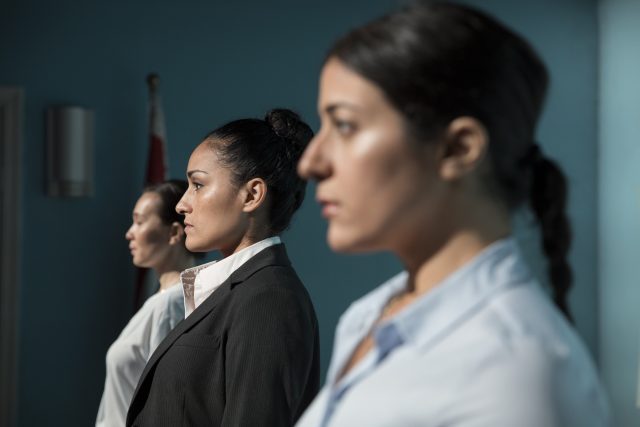
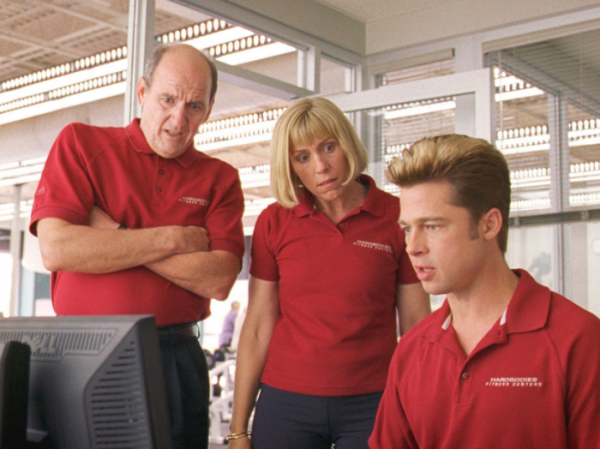
 After delighting audiences with such outstanding indie fare as Blood Simple (1984), Fargo (1996), and O Brother, Where Art Thou? (2000), brothers Joel and Ethan Coen hit a midcareer slump with the mediocre The Man Who Wasn’t There (2001), the much-maligned Intolerable Cruelty (2003), and the just plain awful remake of The Ladykillers (2004). It was three years before they released their next film, the Oscar-winning monster hit No Country for Old Men. In 2008 they toned things down again with the slight but entertaining Burn After Reading. John Malkovich is hysterical as Osborne Cox, an angry, bitter, foul-mouthed CIA agent who loses his job and decides to write a tell-all memoir, which bizarrely ends up in the hands of a pair of bumbling idiots, Chad Feldheimer (an extremely funny Brad Pitt) and Linda Litzke (Frances McDormand). Linda really wants to get a whole bunch of plastic surgery done, so she plans on squeezing a lot of money out of old Mr. Cox, who has no patience for anyone other than himself. Throw in a cold-as-ice wife (Tilda Swinton), a philandering G-man (George Clooney), a Russian ambassador named after Severn Darden’s character in The President’s Analyst, a stellar cast that also includes Richard Jenkins, J. K. Simmons, David Rasche, Elizabeth Marvel, and Dermot Mulroney, and some shocking violence and — well, we’ve told you too much already. Burn After Reading might not be grade-A Coen brothers, but it’s still a worthwhile endeavor from two of America’s most ingenious filmmakers. The movie, which asks the question “The Russians? Are you sure?,” is screening at Nitehawk on September 24 as part of the “Booze & Books” series and will be followed by a Q&A with Film Comment contributor and Harpers digital editor Violet Lucca and Adam Nayman, author of the new book
After delighting audiences with such outstanding indie fare as Blood Simple (1984), Fargo (1996), and O Brother, Where Art Thou? (2000), brothers Joel and Ethan Coen hit a midcareer slump with the mediocre The Man Who Wasn’t There (2001), the much-maligned Intolerable Cruelty (2003), and the just plain awful remake of The Ladykillers (2004). It was three years before they released their next film, the Oscar-winning monster hit No Country for Old Men. In 2008 they toned things down again with the slight but entertaining Burn After Reading. John Malkovich is hysterical as Osborne Cox, an angry, bitter, foul-mouthed CIA agent who loses his job and decides to write a tell-all memoir, which bizarrely ends up in the hands of a pair of bumbling idiots, Chad Feldheimer (an extremely funny Brad Pitt) and Linda Litzke (Frances McDormand). Linda really wants to get a whole bunch of plastic surgery done, so she plans on squeezing a lot of money out of old Mr. Cox, who has no patience for anyone other than himself. Throw in a cold-as-ice wife (Tilda Swinton), a philandering G-man (George Clooney), a Russian ambassador named after Severn Darden’s character in The President’s Analyst, a stellar cast that also includes Richard Jenkins, J. K. Simmons, David Rasche, Elizabeth Marvel, and Dermot Mulroney, and some shocking violence and — well, we’ve told you too much already. Burn After Reading might not be grade-A Coen brothers, but it’s still a worthwhile endeavor from two of America’s most ingenious filmmakers. The movie, which asks the question “The Russians? Are you sure?,” is screening at Nitehawk on September 24 as part of the “Booze & Books” series and will be followed by a Q&A with Film Comment contributor and Harpers digital editor Violet Lucca and Adam Nayman, author of the new book 
